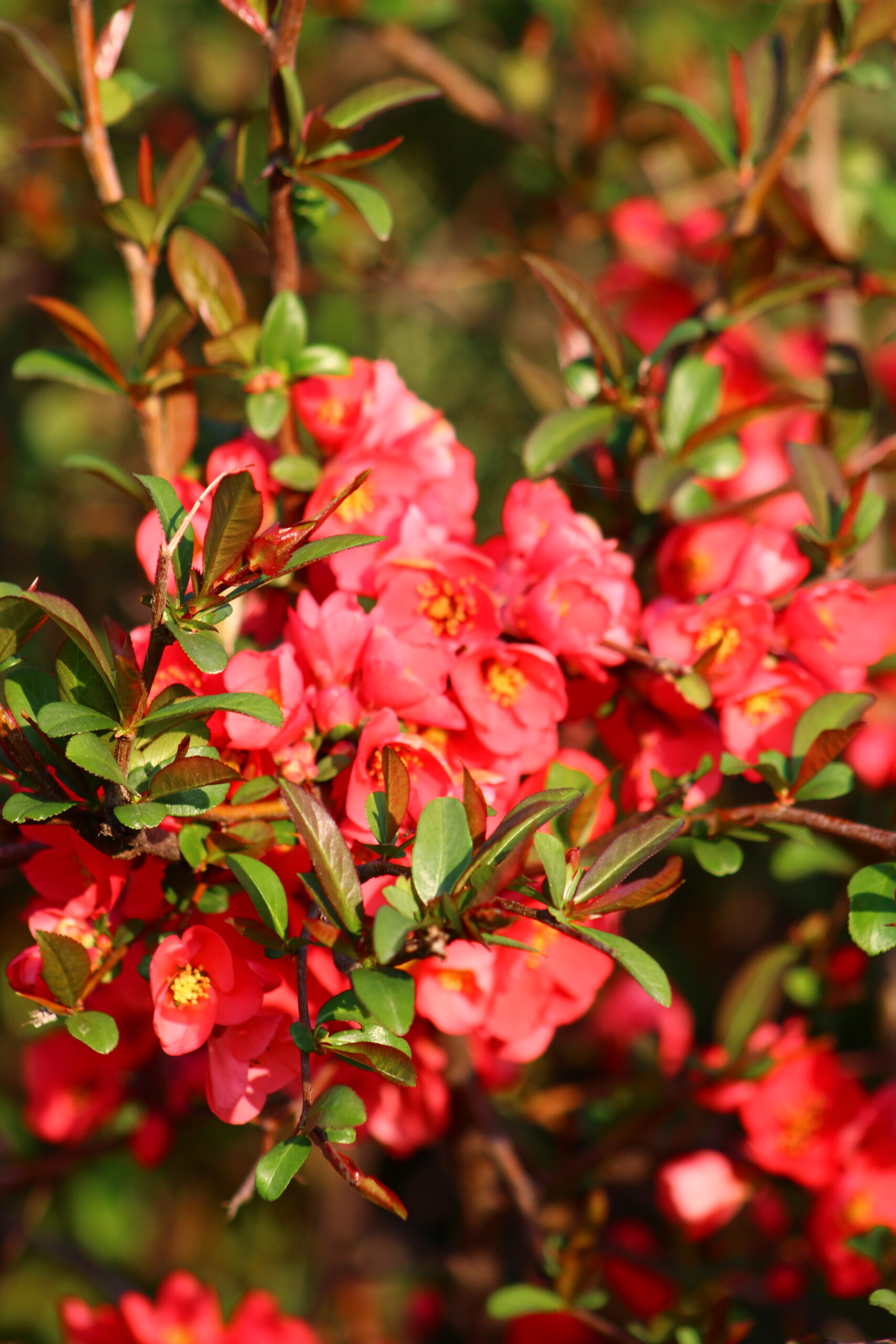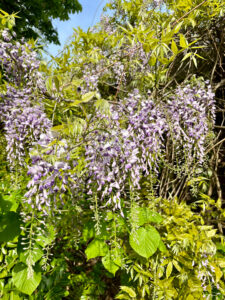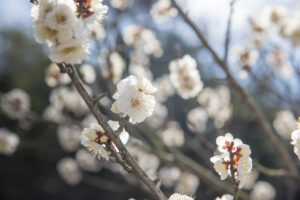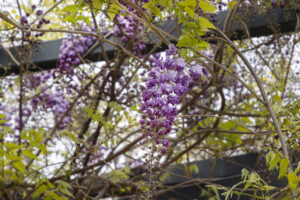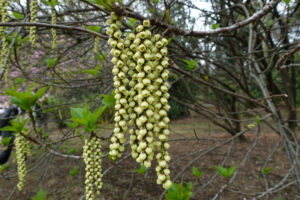In the world of ornamental gardening, many plants often take center stage, overshadowing lesser-known yet equally stunning varieties. One such hidden gem is Chaenomeles japonica, commonly known as Japanese quince. This hardy shrub has captured the hearts of gardeners and horticulturists alike with its stunning blooms, resilience, and multifaceted uses. This article delves deep into the beauty and benefits of Chaenomeles japonica, exploring its allure, historical significance, cultivation tips, and much more.
1. Introduction to Chaenomeles Japonica: A Hidden Gem
Chaenomeles japonica, native to East Asia, is a deciduous shrub that belongs to the Rosaceae family. Often overlooked in favor of more popular flowering plants, this enchanting species has much to offer. Its charming features include an upright growth habit and dense, thorny branches adorned with glossy leaves. Reaching heights of 3 to 10 feet, Chaenomeles japonica is the perfect addition to any garden or landscape, providing both structure and color.
What sets Chaenomeles japonica apart is its early spring flowering, which heralds the arrival of warmer weather. The small, cup-shaped flowers bloom in various shades, including red, pink, and white, often before the leaves fully emerge. This characteristic allows them to stand out in the landscape, creating a stunning visual effect that is hard to ignore.
In terms of adaptability, Chaenomeles japonica is a resilient shrub that tolerates a wide range of soil types and conditions, making it an ideal choice for beginner and seasoned gardeners alike. It is also drought-resistant, allowing it to thrive in less-than-ideal environments. As awareness of this shrub grows, it is becoming increasingly popular in garden designs around the world.
Chaenomeles japonica is often planted in borders, hedges, or as a standalone specimen, showcasing its versatility. Its habit of branching out creates a natural barrier, making it an effective choice for privacy screens. Furthermore, its ornamental value combined with its practicality makes it a smart investment for any garden enthusiast.
With so many appealing qualities, it’s no wonder that Chaenomeles japonica is gaining recognition as a staple in ornamental gardens. As we explore its vibrant blooms and benefits, one can truly appreciate why this plant deserves a prominent place in our landscapes.
2. The Allure of Chaenomeles Japonica’s Vibrant Blooms
The first sign of spring often brings a burst of color to gardens, but few plants can rival the breathtaking display of Chaenomeles japonica. Its flowers bloom in early spring, often before the leaves appear, creating a striking contrast against the still-bare branches. The blossoms, shaped like small cups, are densely packed, providing a bold splash of color that can brighten even the dullest landscapes.
The hues of Chaenomeles japonica are particularly captivating. From fiery reds to soft pinks and pristine whites, the diversity in color allows it to complement various garden palettes. This versatility means it can serve as a focal point, or harmonize beautifully with other spring-blooming plants, enhancing the overall aesthetic of the garden.
Each bloom lasts for several weeks, attracting not only the eye but also the senses. The delicate fragrance of the flowers adds an aromatic element to the garden that can be enjoyed from a distance. This sensory experience elevates the appeal of Chaenomeles japonica beyond mere visual beauty, making it a delight for those who appreciate nature’s offerings.
Beyond their beauty, the blossoms of Chaenomeles japonica are also known for their longevity. While many spring flowers have a short life span, the blooms of this shrub can persist through the early summer, providing an extended period of enjoyment. This extended blooming period ensures that gardeners can savor the beauty of spring for a more extended time.
Additionally, the flowers are a valuable resource for bees and other pollinators, making this shrub not merely a decorative plant but a vital part of the ecosystem. By incorporating Chaenomeles japonica into gardens, one contributes to the health and diversity of local wildlife while enjoying its stunning blooms.
In summary, the allure of Chaenomeles japonica’s vibrant blooms lies in their beauty, fragrance, and ecological benefits. This shrub serves as a testament to the idea that sometimes, the lesser-known plants can offer just as much, if not more, than their more famous counterparts.
3. Historical Significance of Chaenomeles Japonica in Gardens
Chaenomeles japonica has a rich history that traces back to its native lands in East Asia, particularly Japan and China. Its cultural significance is deeply rooted in traditional practices, where the plant has been celebrated for centuries. In Japan, it is known as "kikunomori," symbolizing resilience and prosperity, and has been featured in various art forms, including paintings and poetry.
Historically, the plant was cultivated not only for its ornamental value but also for its fruits. The quince, or "mizume," is harvested from Chaenomeles japonica, and it has been used in traditional Japanese cuisine and herbal medicine for generations. This dual purpose has contributed to its esteemed status in Japanese culture, where it signifies good fortune and hope.
In gardens, Chaenomeles japonica has been utilized for its ability to thrive in challenging conditions. Its adaptability made it a favored choice among early gardeners who sought resilient plants that could withstand harsh climates. The shrub’s thorny branches also served a practical purpose, acting as a natural deterrent against intruders, both human and animal.
During the Victorian era, there was a surge of interest in exotic plants, and Chaenomeles japonica captured the attention of European botanists. Its unique flowers and intriguing fruit led to its introduction in gardens across Europe and North America. The plant quickly gained popularity among landscape designers, who appreciated its ability to add color and texture to perennial gardens.
Today, Chaenomeles japonica is celebrated for its historical significance as much as for its beauty. Gardeners and horticulturists continue to honor the plant’s legacy, incorporating it into modern designs while paying homage to its cultural roots. As we explore the benefits of Chaenomeles japonica, it is essential to recognize the rich history that has shaped its place in gardens around the world.
4. Cultivation Tips for Thriving Chaenomeles Japonica Plants
Successfully cultivating Chaenomeles japonica requires an understanding of its specific needs and care requirements. First and foremost, this shrub thrives in well-drained soil. While it is adaptable to various soil types, ensuring that the planting area has good drainage is essential to prevent root rot and other moisture-related problems.
When selecting a location for planting, consider full sun to partial shade. Chaenomeles japonica flourishes best when it receives at least six hours of sunlight daily. A sunny spot will promote more vibrant blooms and healthier foliage. However, it can tolerate some shade, especially in hotter climates, making it a versatile choice for various garden layouts.
Planting time is another critical aspect to consider. The best period to plant Chaenomeles japonica is in early spring or fall. This timing allows the plant to establish its root system before the heat of summer or the chill of winter sets in. When planting, dig a hole that is twice the width of the root ball, and ensure the top of the root ball is level with the surrounding soil to encourage healthy growth.
Watering is crucial during the establishment phase. While Chaenomeles japonica is drought-tolerant, young plants need regular watering until they are well-established. Once established, they can withstand periods of dryness. However, during extreme heat or prolonged dry spells, providing supplemental water will help maintain their vigor and flowering capacity.
Pruning is another essential care practice for Chaenomeles japonica. Light pruning can be done after flowering, which encourages new growth and keeps the plant’s shape tidy. Removing dead or weak branches helps improve air circulation, reducing the risk of disease. Additionally, this shrub responds well to rejuvenation pruning, which can be performed every few years to maintain its size and promote vigorous new growth.
By following these cultivation tips, gardeners can ensure that their Chaenomeles japonica plants thrive and continue to beautify their landscapes for years to come. With the right attention and care, this hardy shrub can be a stunning and enduring presence in any garden setting.
5. Chaenomeles Japonica: A Hardy Addition to Any Landscape
In the realm of ornamental gardening, hardiness is a prized trait, and Chaenomeles japonica certainly meets this criterion. One of the most striking features of this shrub is its ability to endure various climatic conditions. It can withstand temperatures as low as -10°F (-23°C), making it suitable for a wide range of growing zones. This resilience allows gardeners in colder regions to enjoy its beauty without fear of winter damage.
Moreover, Chaenomeles japonica’s tolerance for poor soil conditions further enhances its appeal. Unlike many ornamental plants that require rich, fertile soil, this shrub can thrive in sandy, loamy, or even clay soils. This adaptability means that gardeners can incorporate it into areas where other plants might struggle, such as rocky or infertile landscapes.
The plant’s drought resistance is another critical aspect of its hardiness. Once established, Chaenomeles japonica requires minimal watering, making it an excellent choice for water-wise gardens. This characteristic not only conserves water but also reduces the maintenance effort required, allowing gardeners to enjoy its beauty without constant care.
In addition to its physical resilience, Chaenomeles japonica is also resistant to many common pests and diseases. While it can occasionally be affected by aphids or scale insects, these issues are typically minimal and easily managed with organic controls. This pest resistance makes it an ideal choice for those looking to create a low-maintenance garden.
The versatility of Chaenomeles japonica extends to its landscape applications. It can be used in various settings, including foundation plantings, mass plantings, or as a specimen plant in a mixed border. Its unique form and colorful blooms provide visual interest throughout the seasons, making it a valued addition to any landscape.
In summary, the hardiness of Chaenomeles japonica makes it a practical and attractive choice for gardeners worldwide. Its ability to thrive in diverse conditions while maintaining its stunning appearance ensures that this shrub remains a cherished element of ornamental gardens for generations.
6. The Ecological Benefits of Planting Chaenomeles Japonica
In today’s environmentally conscious world, selecting plants for gardens that contribute positively to the ecosystem is more important than ever. Chaenomeles japonica stands out as a plant that offers numerous ecological benefits. First and foremost, this shrub plays a vital role in supporting local wildlife, particularly pollinators. Its early spring blooms provide a crucial food source for bees, butterflies, and other beneficial insects emerging from winter dormancy.
By choosing Chaenomeles japonica for garden landscapes, homeowners can help create a more biodiverse environment. This shrub not only attracts pollinators but also serves as a habitat for various small animals and insects. Its dense branches provide shelter and nesting sites, contributing to the overall health of local ecosystems.
Additionally, Chaenomeles japonica is beneficial for soil health. Its deep root system helps prevent soil erosion by stabilizing the soil and improving its structure. As the plant grows, it can also contribute organic matter to the soil when leaves drop, enriching the surrounding ecosystem and promoting healthy microbial activity.
Moreover, the plant’s ability to thrive in poor and degraded soils makes it a valuable addition to restoration projects. Chaenomeles japonica can help reclaim areas that have been disturbed or degraded, serving as a pioneer species that prepares the ground for other plants to follow. This ecological role is especially important in urban environments where space for green areas is limited.
Planting Chaenomeles japonica can also contribute to carbon sequestration, helping to mitigate climate change effects. As with all plants, it absorbs carbon dioxide during photosynthesis, playing a role in reducing greenhouse gases in the atmosphere. By incorporating this shrub into public and private landscapes, communities can contribute to broader environmental goals.
In conclusion, the ecological benefits of planting Chaenomeles japonica extend far beyond its ornamental value. By supporting pollinators, enhancing soil health, and contributing to biodiversity, this hardy shrub allows gardeners to make a positive impact on the environment while enjoying its beauty.
7. Culinary Uses: From Ornamental to Edible Delights
While Chaenomeles japonica is often celebrated for its ornamental qualities, it also boasts culinary potential that is frequently overlooked. The fruit of this shrub, though small and hard, plays a vital role in traditional cuisines, particularly in East Asia. The quince-like fruits are rich in flavor and have been utilized in various culinary applications for centuries.
The fruit of Chaenomeles japonica can be harvested in late summer to early fall, depending on the climate and specific cultivar. While the raw fruit is quite hard and sour, it becomes more palatable when cooked. Many culinary traditions incorporate the fruit into jams, jellies, and preserves, where the tartness is balanced with sugar, resulting in a unique flavor profile.
In addition to preserves, the fruit can also be used in a variety of dishes. It can be stewed or poached with sugar and spices to create a delightful dessert or added to savory dishes, such as tagines and meat stews, where its acidity complements rich flavors. The culinary versatility of Chaenomeles japonica makes it a valuable addition to any edible garden.
The extract from the fruits is rich in pectin, making it an excellent natural thickener for sauces and other prepared foods. This characteristic makes it particularly appealing to those interested in natural cooking methods and sustainable food practices. By utilizing the fruit of Chaenomeles japonica, gardeners can create delicious, homemade products while minimizing waste.
Culinary enthusiasts are beginning to appreciate the potential of Chaenomeles japonica, leading to a resurgence in its cultivation for culinary use. Recipes featuring this unique fruit are becoming more prevalent in cookbooks and food blogs, encouraging a new generation to explore its delightful flavors.
In conclusion, the culinary uses of Chaenomeles japonica expand its appeal beyond ornamental gardening. By recognizing and embracing the edible potential of this shrub, gardeners can enjoy its beauty while also benefiting from its delicious fruits in their culinary creations.
8. Medicinal Properties of Chaenomeles Japonica Explored
The medicinal properties of plants have intrigued humans for centuries, and Chaenomeles japonica is no exception. Traditional medicine in East Asia has long recognized the health benefits associated with this shrub’s fruit and foliage. Rich in vitamins, antioxidants, and other beneficial compounds, Chaenomeles japonica has been utilized in various herbal remedies aimed at promoting well-being.
The fruit of Chaenomeles japonica is known for its high vitamin C content, which plays a crucial role in boosting the immune system. Additionally, the antioxidants found in the fruit can help combat oxidative stress, reducing the risk of chronic diseases. This makes the fruit a valuable addition to a healthy diet, contributing to overall health and vitality.
In traditional Chinese medicine, Chaenomeles japonica has been used to treat digestive issues, respiratory ailments, and skin conditions. The fruit is often prepared as an infusion or decoction to harness its therapeutic properties. By incorporating this shrub into home remedies, individuals can tap into its potential health benefits while also enjoying its flavorful fruits.
The leaves and flowers of Chaenomeles japonica also hold medicinal value, with various uses in herbal preparations. They have been traditionally employed to alleviate inflammation and promote skin healing. The anti-inflammatory properties attributed to the shrub can be harnessed to create soothing balms and poultices for minor wounds and irritations.
As interest in natural remedies continues to grow, the medicinal properties of Chaenomeles japonica are gaining renewed attention. Researchers are exploring the phytochemical composition of the fruit and other plant parts to uncover their full potential. This exploration may lead to new insights into how this remarkable shrub can contribute to health and wellness.
In summary, the medicinal properties of Chaenomeles japonica underscore its value beyond ornamental or culinary use. By embracing its therapeutic potential, gardeners and herbal enthusiasts can further appreciate this versatile plant while contributing to their health and well-being.
9. Attracting Pollinators: The Role of Chaenomeles Japonica
The importance of pollinators cannot be overstated, as they play a vital role in maintaining healthy ecosystems and ensuring food production. Chaenomeles japonica stands out as a significant contributor to attracting these essential insects. Its early spring blooms provide a vital food source for bees, butterflies, and other pollinators emerging from winter dormancy.
By planting Chaenomeles japonica, gardeners can create an inviting habitat for pollinators during a time when food sources are scarce. The shrub’s bright, cup-shaped flowers are not only visually appealing but also rich in nectar, making them a magnet for various pollinator species. This characteristic enhances the biodiversity of local gardens and supports the health of ecosystems.
In addition to providing nourishment, the structure of Chaenomeles japonica offers essential shelter for pollinators. Its dense growth habit creates safe spaces for insects to rest and nest, contributing to the overall viability of pollinator populations. By fostering a hospitable environment, this shrub plays a crucial role in the conservation of these vital species.
Planting Chaenomeles japonica in combination with other flowering plants can further enhance its pollinator-friendly qualities. By creating a diverse garden that blooms at different times, gardeners can ensure that pollinators have access to food sources throughout the growing season. This approach not only aids pollinators but also promotes a more vibrant and lively garden.
Educational initiatives and community gardening efforts increasingly emphasize the significance of pollinator-friendly plants. As gardeners become more aware of their choices, choosing Chaenomeles japonica becomes a conscious decision to support local wildlife and ecosystems. By incorporating this shrub into landscapes, individuals can contribute to broader conservation goals while enjoying its beauty.
In conclusion, Chaenomeles japonica serves as an important ally in the fight to protect and support pollinator populations. By providing food and shelter, this hardy shrub enriches gardens while promoting biodiversity and ecological health.
10. Landscape Design Ideas Featuring Chaenomeles Japonica
When it comes to landscape design, incorporating unique and versatile plants can elevate the overall aesthetic and functionality of outdoor spaces. Chaenomeles japonica offers various possibilities for creative garden layouts. Its vibrant blooms, dense foliage, and adaptability make it a compelling choice for various design concepts.
One popular approach is to use Chaenomeles japonica as a focal point in mixed borders or perennial gardens. Its early spring flowers provide a burst of color that complements other blooming plants, creating a dynamic and visually appealing scene. The upright growth habit of the shrub ensures that it stands out amongst lower-growing perennials, drawing the eye and enhancing the garden’s depth.
Chaenomeles japonica is also effective when used as a hedge or privacy screen. Its thorny branches create a natural barrier, providing both aesthetic appeal and security. By planting several specimens in a row, gardeners can create a lush green wall that offers privacy while also serving as a habitat for birds and other wildlife.
For those interested in more formal garden designs, Chaenomeles japonica can be trained to grow as an espalier against walls or fences. This method adds a unique architectural element to the landscape while showcasing the plant’s beautiful flowers. An espaliered Chaenomeles japonica can serve as a stunning backdrop for outdoor seating areas or pathways, enhancing the overall ambiance of the garden.
In addition to traditional garden settings, Chaenomeles japonica can be utilized in urban environments where space is limited. Its compact size and drought tolerance allow it to thrive in smaller gardens, container gardens, or even rooftop gardens. Its vibrant blooms can bring life and color to concrete spaces, creating a refreshing oasis in urban settings.
Finally, incorporating Chaenomeles japonica into community gardens or public landscapes can promote awareness of its ecological benefits. By showcasing its vibrant blooms and its role in attracting pollinators, individuals can inspire others to appreciate the beauty and value of this hardy shrub. Such initiatives can encourage more people to explore the
